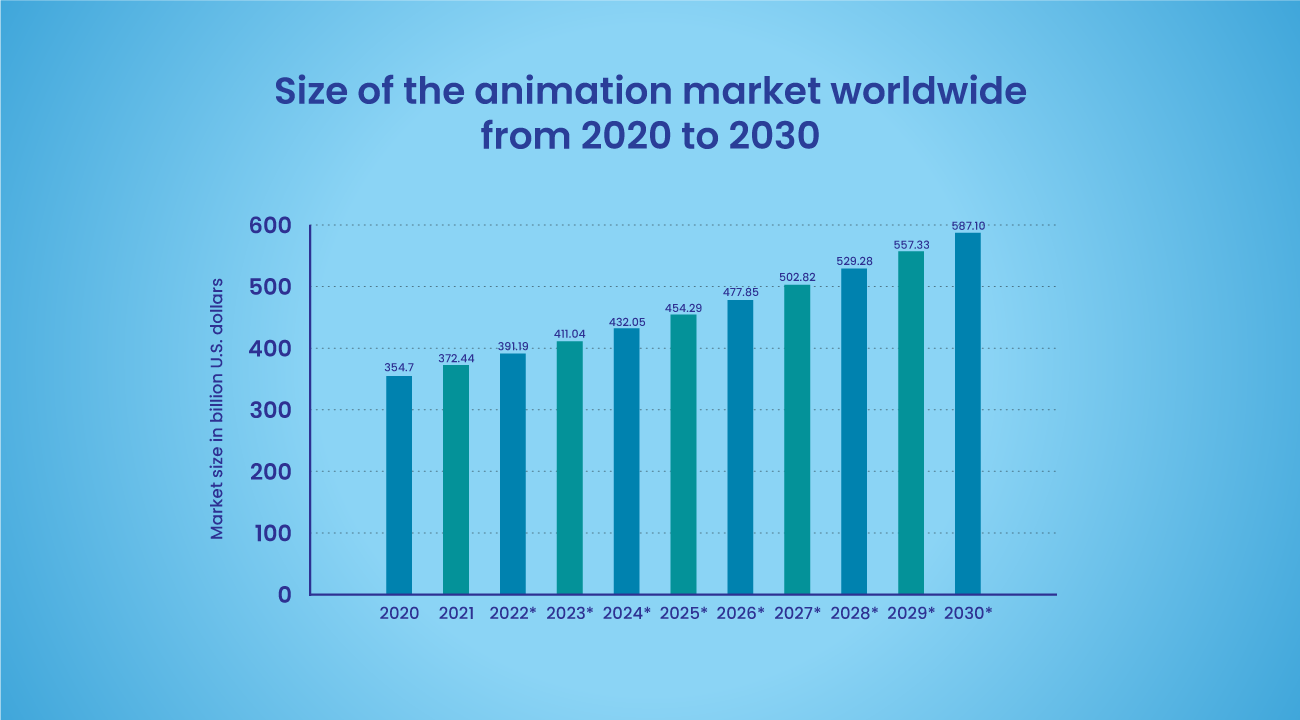A product demo video is all about explaining your product in action to attract potential customers. Nowadays, animated explainer videos are doing a better job at demonstrating your product because of its great visual and compelling storytelling style. Now, many businesses and startups use animated explainer videos to market and explain their products and services to their target audience. These videos are short, entertaining, and cost-effective. So, it helps businesses to generate more engagement and boost sales for the product.
Animation has a long history, starting from the 1800s to their modern advancement as their distinctive video style today. Moreover, the style of creating animations has also evolved over the years. From hand paintings to vibrant illustrations, it has transformed a lot. In this article we are going to discuss about how animated explainer videos can be the ultimate medium to demonstrate products and services in future-
How To Make An Animated Explainer Video?
Even though animated explainer videos are often short, creating one requires a lot of time and effort. Here are some basic yet important steps you can follow to make an animated explainer video that your audience will remember.
Step 1: Writing the Script
A script is generally the skeleton of the whole body of work. It contains the main gist of the video. Here’re the things you need to consider before preparing the script:
- Before you start, you should determine your objective, target viewers, and the core message you want to send to your audience.
- Keeping the objective in mind, write a short, concise script that gets to the point quickly.
- Before writing the script, three elements needs to be maintained-
- The Hook: It is the first 8-10 seconds of the video and is the cue for you to get your audience hooked.
- The Patty: It is the meat of the video as it contains the main part of the story that needs to align with the rhythm of the hook.
- The Call to Action: It is the final part of the video. It’s supposed to encourage people to perform a particular action that will eventually extend their relationship with your business.
Step 2: Creating the Storyboard
Once the script is done, it is essential for collaborators and decision-makers to see if the script has finally come to a shape or not. For creating a storyboard, if you have an experienced in-house artist who is good at sketching, you can rely on them. Otherwise, there are numerous softwares like the Animator that you can use for storyboards.
Step 3: Record Voiceover and Animate Your Video
The audio narration has to be recorded once the script and storyboard have been prepared. The next thing you need to select is an animation style suited for your business module such as- 2D, 3D animation, whiteboard, etc. It can be challenging to find a suitable style for your animation videos, but once you’ve selected the animation, you can use an in-house team of animators or you can outsource an animation studio.
Why Are Animated Explainer Videos So Popular Now?

Animated explainer videos are becoming popular because of its on-point brief presentation of a product or service. We can look into the history of animated explainer videos to understand the root cause of their success.
In April 2007, a American package transportation corporation UPS came up with a series of videos for their video advertising campaign that marked the debut of whiteboard animation.These brief videos served as an introduction to the company’s many services, such as increased freight and delivery interception, and their targeted client benefits— single pickups for numerous outbound deliveries and smart labels. The makers of this format video didn’t know that they unknowingly created something great.
In the same year, a small Seattle-based company called Common Craft launched a series of animated explainer videos on Youtube using paper-cut drawings. Among these, the most famous one was “In Plain English”. The “In Plain English” videos employed a distinctly short and honest narration about Twitter services. Even though this time the hands of the host were visible on the screen as they pulled and pushed paper cutout cartoons, later they stopped doing that. The narration and the straightforward visuals, which clearly explained new concepts were in the spotlight. Hence, Common Craft describes themselves on their website as “pioneers in the field of explainer videos,”.
Despite all of the advancements made in the late 2000s, the phrase “explainer video” didn’t become widely used until the next decade. According to Google Trends, the term began to gain popularity around the world in late 2011. This digital animation became the standard for explainer videos for many years after that. Late in 2012, the now-famous TED-Ed channel worked with a number of animators to produce a collection of quick explanation movies. In addition to that, now big companies like Microsoft, Google, PayPal, Spotify, IBM, and Uber Eats, also create animated explainer videos to promote and describe their product or services.
What Do the Statistics Say about Animated Explainer Videos?
We have compiled a few popular statistics about animated explainer videos and those are-
- 20% of people can recall material they have read and 10% of people can recall material they have heard but 85% of people are more likely to remember a product after watching an explainer video.
- 87% of marketing professionals have already acknowledged animated explainer videos as the most efficient marketing tool.
- 76% of businesses claim that animated explainer videos helped them boost sales.
- 76% of businesses claim that animated explainer videos helped their businesses boost traffic.
- 80% of marketers claim that videos have extended visitors’ session time due to using animated explainers on their websites.

The Future of Animated Explainer Videos
According to data from 2015 and 2016, 88% of online consumers are spending more time on websites with videos. These figures definitely indicate that viewers like websites with videos over those without them.
This is why today’s brands and businesses don’t just upload a new video to YouTube and expect customers to purchase their goods, they give extra effort. Interestingly, explainer videos and product demo videos both have the capacity to showcase a product. They can boost click and conversion rates and be used to provide an overview of a product or service. Despite similarities, they have their own strengths that serve different purposes throughout the conversion funnel. In terms of raising exposure and awareness, explainer video clips will perform better on the top side of the marketing funnel. On the other hand, when customers are already familiar with your product but want to see it in use, product demo videos are the ideal solution. Although this sort of video is excellent for convincing target customers that your product is reliable, it is unlikely to attract much attention on its own. This indicates an irreplaceable position for explainer videos in the future. They will evolve in style and characteristics and will remain as the most effective marketing strategy.
Virtual Reality:
More immersive videos are to come when virtual reality and augmented reality become traditionally popular. These recordings, often known as 360-degree videos, capture a view from every angle utilizing a group of cameras or an omnidirectional camera. These types of animated explainer videos will be able to provide users with a sense of what to expect once they begin using the product. Potential buyers can virtually recreate your product, changing its design to suit their needs and deciding which colors would look best.
3D Elements:
When you combine 2D frames and 3D objects, you can make an explanation video that is smooth and incredibly captivating. It will have a futuristic appearance and effectively convey your message. You will have a lot of flexibility and creative freedom while working with 2D and 3D animation visuals. There are no restrictions on what can be displayed on the screen for viewers. 3D artists employed by explainer video production businesses will be able to make this a reality. Explainer videos in three dimensions are far more powerful since they reflect the high standards that your company upholds.
Minimalism:
We undoubtedly live in an era of information overload. Explainer videos will likely become more simplistic in the near future. There is a probability of a growing interest in minimalistic animated explainer videos in the near future. Hence, we can hopefully get a more extensive and diverse range of minimalistic animated explainer videos in the future.
Direct Link To Products:
You should soon be able to choose whether or not your explainer films display connections to related products. The ability to interact with the video’s elements is something that developers are building, even if there hasn’t been much progress in this area. This will allow the viewer to act right away while watching the explainer video as there can be time-limited deals on the video itself.
Wrapping up
In this article, we have explained the past, present, and future of animated explainer videos and the possibility it holds in the business world. Moreover, with a future as promising as this, you definitely want to add an animated explainer video as your next marketing strategy, don’t you?




